Learning What Child Support Consists of in Alberta

Child support is the money paid by one spouse to the other to assist with the care and upbringing of a child after a divorce.
In general, it includes fixed monthly amounts for basic daily support, plus coverage for other important expenses such as educational or healthcare costs.
It is a complex subject that can be confusing for some couples going through a divorce.
Child Support guidelines in Alberta come from two sources: The Federal Child Support Guidelines, which are part of the Divorce Act, and the Alberta Child Support Guidelines (part of the Family Law Act). These guidelines help establish fair and consistent child support amounts based on the paying parent’s income, the number of children, and the parenting arrangement. Child support in Alberta seeks to ensure that children continue to benefit from the financial support of both parents, even after a separation or divorce. By using standardized calculations, the system aims to reduce conflict and promote the best interests of the child.
The information below should clear up many of your questions about child support in Alberta.
Child support and where the child will live
Child support is a separate but connected consideration to child custody.
A divorce agreement needs to include a fair solution for both or the Alberta courts will impose one in their ruling before the final divorce decree is signed by the judge.
Where the child will live after divorce (custody) is a key consideration that must be decided before child support arrangements can be meaningfully calculated.
There are usually several options and here is how each one affects child support payments.
Living with one parent
If a child lives primarily with one parent, the amount of child support paid by the other parent can be found by entering details into the federal child support calculator.
This amount is based simply upon the income of the other parent and the number of children involved.
Shared custody
In a shared custody arrangement where the children’s time is shared approximately evenly between both parents, the following method is used to calculate child support:
- In the child support tables, enter the details of the total number of children and income for each parent and note the amount for each
- The higher income parent pays the difference between the two table amounts
Split custody
In a split custody arrangement, one or more children live with each parent.
The following method will be used to calculate child support:
- In the child support tables, enter the details of the incomes and total number of children living with each parent and note the table amount for each
- One parent pays the difference between the two table amounts
These methods are the standard guidelines used, though there is latitude for judges in divorce cases to deviate from the guidelines.
This is especially the case when:
- There is shared or split custody
- One parent is a particularly high earner
- One parent is suffering financial hardship
Additional child support expenses
When considering child support, the court will also provide for special expenses (often termed “section seven expenses”) through an order for payment.
These may include expenses for:
- Education
- Healthcare (medical, dental, etc.)
- Child care
- Insurance
- Extraordinary extracurricular activities
- Higher education
Special expenses are divided between the two parents according to their respective incomes.
If one parent makes $60,000 pa and the other $90,000 pa, the first parent will pay two-fifths of the special expenses and the second will pay three-fifths.
Full disclosure of income between parents
When child support payments are calculated, there must be full disclosure of income between parents.
This can be ordered by the court if it is not forthcoming voluntarily.
If income changes, or it is found that one parent did not fully disclose their income, a child support order can be adjusted accordingly at a later date.
The financial information required if you are liable for child support payments includes:
- A complete tax return
- Your notice of assessment
- Documents demonstrating income earned by self-employed parents
A parent in receipt of child support must demonstrate the income they earn if there are special expenses to calculate payments for.
What income is used to determine child support?
“Guideline income” is the term used for income that is used to calculate child support payments.
Generally, this is your gross annual income as detailed in last year’s tax return or your current income for the year-to-date.
In some cases, the figure can be different. For instance, if you:
- Have a fluctuating income that changes dramatically from one year to the next
- Must pay union fees
- Receive a one-time source of income
- Are self-employed
- Receive stock options, dividends or capital gains
- Have tax-free income
- Are intentionally unemployed or under-employed
In each of the above cases, the calculation of child support may be more complex and the standard guidelines alone may not be enough.
What if one parent can’t afford child support?
The court is able to change an intended child support order on the basis that one parent successfully makes a case for undue financial hardship.
This could be the receiving or the paying parent and, in such cases, the judge can deviate from the child support guidelines.
However, in order to successfully argue a case for financial hardship, you must show that:
- Support must be paid for another child
- High costs are associated with access
- Significant debts were incurred while living together or are incurred while earning a living
Another way to claim undue hardship is to demonstrate that you have a lower standard of living in your household than the other parent.
Will I owe child support for post-secondary studies in Alberta?
The age of majority in Alberta is 18. Usually, parents need to support children until they reach this age.
However, if your child attends post-secondary education either on a full-time or part-time basis at a recognized educational institution, you may still have to pay child support.
Who do I pay post-secondary child support to?
Post-secondary support payments may be made to:
- The other parent
- The child directly
- Third parties, such as schools
In most cases, it is advisable to make payments to the other parent or direct to the educational establishment.
Only if you have a court order stating that you must make payments directly to the child is it advisable to do so.

We currently have three offices across Alberta — Edmonton, Calgary, and Red Deer. We serve the entire province of Alberta (and BC). We also have the infrastructure to work with any of our clients virtually — even the furthest regions of Alberta.
Call 1 (855) 892-0646 (toll free) to get routed to the best office for you or contact us online for general inquiries.
We also have a dedicated intake form to help you get the ball rolling. Our intake team will review your specific case and advise you on the next steps to take as well as what to expect moving forward. That’s the best way to schedule an appointment
Our offices are generally open 8:30 a.m.—4:30 p.m., Mon—Fri.


Amy Boyd
FAMILY LAWYER
While Amy does not shy away from litigation, she is aware that there are often less burdensome ways to resolve family law matters. Amy always keeps her client’s best interests in mind when advising them on other means of resolution, such as mediations, collaboration, settlements, etcetera.
The Legal Review Process by Spectrum Family Law
- Spectrum strives for high-quality, legally verified content.
- Content is meticulously researched and reviewed by our legal writers/proofers (usually local law students).
- Details are sourced from trusted legal sources like the Family Law Act.
- Each article is edited for accuracy, clarity, and relevance.
- If you find any incorrect information or discrepancies in legal facts, we kindly ask that you contact us with a correction to ensure accuracy.


